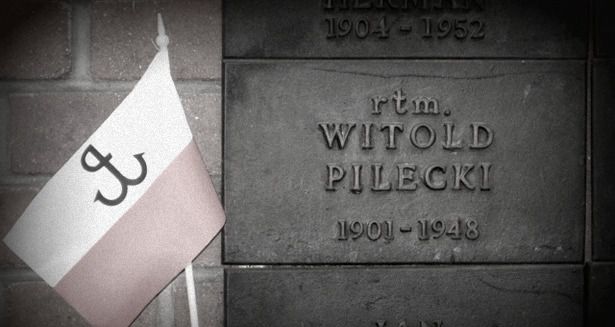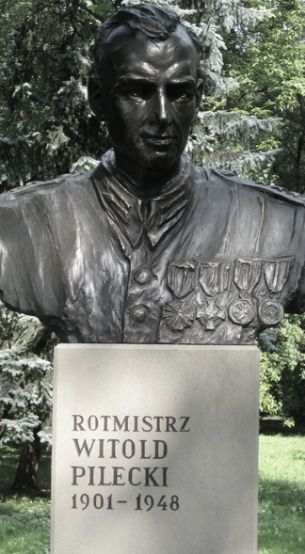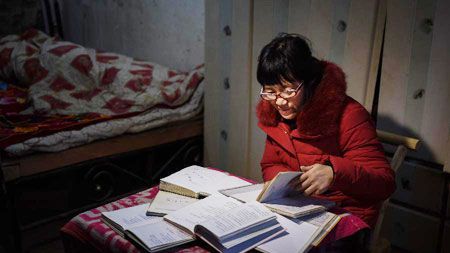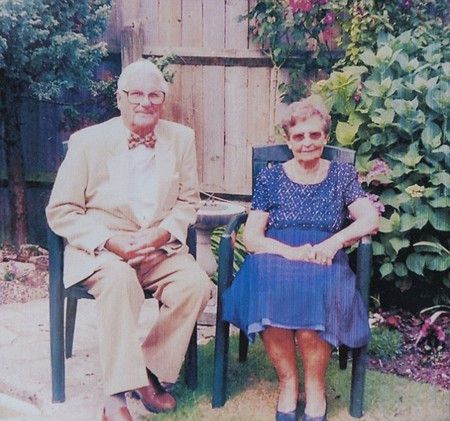奥斯威辛集中营的志愿者(双语)
|
爱思英语编者按:奥斯维辛集中营是纳粹德国在 第二次世界大战 期间修建的1000多座集中营中最大的一座。由于有上百万人在这里被德国法西斯杀害,它又被称为“死亡工厂”。该集中营距波兰首都 华沙 300多公里,是波兰南部奥斯维辛市附近40多座集中营的总称。 The Man Who Volunteered for Auschwitz
"The evil that men do lives after them; - Julius Caesar; Act 3, Scene II 维托尔德·皮莱茨基1901-1948 人所为恶,死后犹存;· 所为之善,与之俱亡。 《尤里乌斯·凯撒》 第三幕,第二场 WARSAW -- There are very few places that can accurately be described as hell on Earth. One of these is the Auschwitz concentration camp during World War II, where as many as 1.5 million people died during the five years the camp was in operation. The Polish resistance had been hearing horrific first- or second-hand accounts about the conditions inside Auschwitz. These early accounts came primarily from released prisoners, but also from casual observers like railway employees and residents of the nearby village of Oswiecim. The resistance decided they needed someone on the inside. It is into this environment that Witold Pilecki, a 39-year old veteran of the Polish-Soviet War of 1919-1921 who fought against the initial Nazi invasion and a member of the Polish resistance, volunteered himself in 1940. Pilecki's mission was to allow himself to be arrested and, once inside Auschwitz, to collect intelligence for the Polish resistance in the country and the government-in-exile in London, and to organize a resistance from inside the camp. "I think he knew, he realized what he was getting himself into," said Jacek Pawlowicz, a historian at Poland's Institute of National Remembrance. "But even so, he was not prepared for the things he was actually able to witness." During the next three years, Pilecki was involved in one of the most dangerous intelligence-gathering and resistance operations of the war. He authored three reports about life inside the camp for the Polish resistance. During his incarceration, Pilecki witnessed from the inside Auschwitz's transformation from a detention facility for political prisoners and Soviet soldiers into one of the Nazis' deadliest killing machines. An English translation of Pilecki's third and most comprehensive report -- a primary source for this article -- was recently published as a book titled The Auschwitz Volunteer: Beyond Bravery . It is a fascinating first-hand account of virtually all aspects of life inside the camp. The original document is in the custody of the Polish Underground Movement Study Trust in London. "He was there in all of Auschwitz's worst periods, because he arrived at the moment when the camp was being created and was there until [1943]," Pawlowicz explained. "So while there he saw the camp growing, he saw [Birkenau] being built -- where the ovens were. But the ovens were not only in [Birkenau], there were gas chambers and crematoria on the territory of Auschwitz I." Pilecki's family was kept out of the loop regarding his activities for security reasons. His son Andrzej Pilecki recalls, "There was secrecy because of the danger, so that the children would know as little as possible. But I felt something. My father was in Warsaw. We were 100 kilometers away. We came to visit him sometimes and my father would teach us how to behave during the occupation." Pilecki began preparations for his mission in the late summer of 1940. While staying at a safehouse, he found identity papers belonging to a man named Tomasz Serafinski, who was erroneously presumed killed in September of 1939. Because the Nazis asked for the names and addresses of inmates and their relatives as a method to keep the population under control, Pilecki wisely decided not to give his real name or those of his immediate family. Pilecki placed his photograph on Serafinski's papers and memorized his details. His plan was to be arrested and booked under the Serafinski alias. In the early morning hours of September 19, Nazis did a roundup in Warsaw and arrested as many as 2,000 people. According to Adam Cyra and Wieslaw Wysocki's 1997 biography Rotmistrz Witold Pilecki, Pilecki was in the apartment of Eleonora Ostrowska the morning of the roundup. A caretaker and member of the resistance came in and made several suggestions to Pilecki for how to avoid being caught. According to Ostrowska, "Witold rejected those opportunities and didn't even try to hide in my flat." When a German soldier knocked on the door and asked who lived there, Pilecki walked out. As he was saying goodbye to Ostrowska, he quietly whispered to her, "Report that I have fulfilled the order." Wladyslaw Bartoszewski, who later became Foreign Minister of Poland, was arrested in the same roundup and taken to Auschwitz in the same transport as Pilecki, which left the morning of September 21 and arrived at the prison camp at 10 p.m. that same day. "At the time we were not aware of what Auschwitz was," he wrote. "The underground movement was compelled to investigate what was happening to those people, to check the possibilities of organizing them somehow, possibly of helping them. And Witold Pilecki embarked on that tremendous task. It was his aware and voluntary decision to join another huge round up in Warsaw." Pilecki was not happy with the behavior he saw of his fellow Poles. "What really annoyed me the most was the passivity of this group of Poles," he later wrote. "All those picked up were already showing signs of crowd psychology, the result being that our whole crowd behaved like a herd of passive sheep." "A simple thought kept nagging me: stir up everyone and get this mass of people moving." Pilecki was booked under the Serafinski alias, and was assigned the prisoner number 4859. Once inside, Pilecki immediately began work on organizing a network among the inmate population. In his own words, his objective was to set up a military organization on the inside to keep up morale, provide news from the outside world, distribute food and clothing to members, smuggle camp intelligence to the outside world, and to prepare detachments to take control of the camp by force if the order were given. He called his network the Union of Military Organization, known by its Polish acronym ZOW, and would be part of the Home Army, the Polish resistance. The secrecy of the ZOW's existence was paramount. To ensure its continuity in the event of discovery by Nazi guards or informants, Pilecki created a highly compartmentalized system of five-man cells. The leader of each cell would be people of utmost confidence, committed to the Polish resistance and able to withstand possible interrogation or investigation by the German guards. Each cell leader swore an oath to Pilecki himself and only knew of the four men under his command, but not of the existence of any other cells. By doing so, Pilecki effectively minimized the risk of exposure to the entire network. Pawlowicz estimates that Pilecki's network included some 500 inmates at Auschwitz by March of 1942, but notes this number may have doubled by the time of Pilecki's escape the following year. In time, Pilecki was able to place informants and allies in key positions throughout the camp. In time, these would prove crucial for Pilecki and other ZOW members.
Life inside Auschwitz tested every inmate. How each of them reacted was entirely subjective. Pilecki wrote, "Camp was a proving ground of character." "Some -- slithered into a moral swamp." "Others -- chiseled themselves a character of finest crystal." According to Pawlowicz, Pilecki would write his reports by hand and then have them smuggled out of the camp to the Polish government-in-exile in London. It would usually take about four months for one of his reports to get from Poland to London, typically smuggled by couriers leaving Gdansk heading for Stockholm using forged German documents. The Polish underground used the Stockholm route because Germans were allowed to travel there without special papers. By early 1943, Pilecki began considering his escape from the camp. He had gone in and accomplished his objective of organizing a resistance within the camp, at which point he thought the logical thing to do was wait for an attack on the camp by the Polish resistance from the outside so they could rise up from within. On top of this, the Gestapo was clamping down on security in the camp and many of Pilecki's recruits had been lost. Pilecki ultimately made the decision to escape on April 13, 1943. The reason behind this was so he could make the argument for an armed assault on Auschwitz in person to the resistance leadership. He began handing over his network contacts and responsibilities to top deputies as a gradual transition process. After approximately 2,500 roll calls and 947 days inside the camp by his own calculations, Witold Pilecki and two other inmates escaped Auschwitz. On the night of Monday, April 26 -- the day after Easter Sunday -- the three men were assigned to work in the bakery, which was located outside the camp grounds. They took advantage of a moment when the SS guard wasn't paying attention to cut a telephone wire, force open a door and made a run for it. Pilecki eventually made his way back to Warsaw and reported to the Home Army's headquarters on August 25, 1943 hoping to find a receptive audience for the ZOW's idea of taking control of Auschwitz from the inside. Unfortunately for him, his former commanding officer, who had known the purpose of his Auschwitz mission, had been arrested two months earlier and the new leadership was not receptive to his proposal. According to Cyra and Wysocki's biography of Pilecki, he felt "bitter and disappointed." Pilecki's use of the Tomasz Serafinski alias had unintended consequences for the real Serafinski. The Gestapo arrested Serafinski on Christmas Day of 1943 on charges of escaping from Auschwitz. He was held in a local prison in Bochnia for three days before being handed over to the Gestapo in Krakow. After undergoing what Cyra and Wisocki describe as a "brutal investigation" in which he consistently rejected the accusations against him, Serafinski was released on January 14, 1944. According to Jacek Pawlowicz, Pilecki and Serafinski later became friends, adding "That friendship is alive to this day, because Andrzej Pilecki visits their family and is very welcome there."
"Almost every day during the first two weeks of the month, he [Pilecki] captured, lost, and recaptured this building," Davies wrote. "Repeatedly driven out, he repeatedly returned and with deadly cunning repeatedly expelled the German defenders. He lived to fight elsewhere. But so long as he threatened this one vital pressure point, the German command was constantly made to feel insecure." The area came to be known as "Pilecki's Redoubt." After the defeat of the Warsaw Uprising, Pilecki surrendered to German authorities on October 5 and was taken as a prisoner-of-war to Marnau, Germany, where he was liberated by the U.S. Army on April 28, 1945. After liberation, he remained at the camp for two months before joining the II Polish Corps in Italy under the leadership of General Wladyslaw Anders. Pilecki was assigned to Section II -- an intelligence unit. It was during this period in Italy in the summer of 1945 that he began writing his third and most definitive report about his time in Auschwitz. Pilecki and two others left Italy in late October of 1945, eventually arriving in Warsaw on December 8. According to Pawlowicz, Pilecki established a cover as a supply manager on a construction site. His real job was to carry out intelligence operations for the II Corps still in Italy, which would pass his information on to the Polish government-in-exile in London. Pilecki recruited several of his old contacts from Auschwitz and the Polish resistance worked in various post-war institutions. According to Pawlowicz, Pilecki's successful operations in this period included obtaining the phone numbers of government officials and Soviet advisors, documents showing the falsification of the results of the People's Referendum of 1946 by the communists, and a secret bilateral trade agreement between Poland and Russia calling for the Red Army to be stationed on Polish territory.
Andrzej Pilecki was 13 or 14 the last time he saw his father in the spring of 1947. At the time, he was living with his mother, sister and two cousins in the town of Ostrow Mazowiecka. At the time, his father was on a mission to convince anti-communist youth resistance living in hiding in the Red Forest by Bialystok to demobilize. "He was to pull out the youth who was in the forest, to let them know that there won't be a Third World War, so why should they stay in the forest?" Pilecki says of his father's assignment. "It was a difficult mission. Why? Because he could have been found out and killed on the spot or exiled to Siberia. And he couldn't reveal himself as an officer for that reason, and the youth would only listen to officers." Of the final meeting with the family, he says, "We lived on the road to Warsaw, and he came to us. He was very sad. He played the piano to himself. And he revealed who he was to my friends. He came to us -- I was with my friends -- and he showed us how to play various games," Pilecki recalls. "He was very happy that my sister and I had so many friends, that we weren't loners -- because we had moved from the east and it was different in Mazowsze. He was very happy that we were connected with others and liked by our peers." "He didn't know he was leaving us forever. But in letters, he would write that we should live worthwhile lives, to respect others and nature. He wrote to my sister to watch out for every little ladybug, to not step on it but place it instead on a leaf because everything has been created for a reason. "Love nature." He instructed us like this in his letters." Pilecki was arrested by communist authorities not long after, on May 5, 1947. According to Pawlowicz, "His fingernails were ripped off, ribs broken, nose broken. His interrogation was very difficult and he was tortured badly." He, and others, were given a show trial for activities against the state the following March. On March 15, he was found guilty on several charges. The court declared, "As a paid agent of General Anders' Intelligence Service, he organized a spy network on Polish territory, collecting information and sending it abroad,' and in doing so 'betraying state secrets.' Pilecki was sentenced to death. A typical capital punishment sentence was carried out within 95 to 105 days of the sentence. The order for Pilecki's execution was given on May 22, two months after his trial. The final account of anyone seeing Pilecki alive comes from father Jan Stepien, a Home Army chaplain whose own capital punishment was later changed to a 15-year prison sentence. His description of Pilecki as he was being led to his execution at the Mokotow prison in Warsaw: "He had his mouth tied with a white bandage. Two guards led him by his arms. He could hardly touch the ground with his feet. I don't know if he was conscious then. He seemed completely faint." The exact location of where Pilecki was buried is unknown. His remains are believed to be either in a meadow next to the Sluzewiec cemetery, or in an area of the Powazki Military Cemetery in Warsaw, also called the meadow, in a mass grave with others who were executed by the post-war communist regime. Today, there is a tombstone with what had been an empty grave for Pilecki in this cemetery. Pilecki's widow Maria, who died in 2002, is now buried there. Flowers, candles and a small Polish flag with the anchor symbolizing the Polish resistance now decorate the gravesite. On the site of the meadow, a brick monument has been built, with small bronze plaques bearing the names of each of the people believed to be buried there, including Pilecki's. Flowers, candles, and Polish flags decorate the site. Pilecki's family wasn't notified of his execution at the time. They even went so far as to doubt whether it had happened. "When it came to his sentence, we didn't believe that it had been carried out," his son Andrzej recalled. "We weren't notified, there was no body. We hoped -- especially my mother -- that he would be useful [to the communists], because he knew so much about different organizations, was so active. We deluded ourselves that maybe he's alive somewhere, in Lubyanka [Prison] or in Siberia." Two years after Pilecki's execution, his son was approached by a former Mokotow prison guard. "I was in prison with your father. I want to help you because your father was a saint," he told Andrzej Pilecki. "I had different tasks, including bringing food to your father. Sometimes he wouldn't touch the food, I wasn't sure if he was praying or thinking. So I would take the food away. Under his influence, I changed my life. I do not harm anyone anymore." But the years after Pilecki's death were difficult on his family. His widow, a teacher, was unemployed for a year and repeatedly had her job applications rejected. Both of his children found their high school and college ambitions limited because of their father's history. They didn't know about their father's activities during the war at the time, only gradually hearing or reading about it over the years. The family owned property in what is now Belarus, which was taken from them and they were never compensated for it. There were unsuccessful attempts to rehabilitate Pilecki's memory through official channels in 1957 and again in 1974. In 1989, the Board of the Association for the Care of Auschwitz posthumously awarded Pilecki Order of the Auschwitz Cross, and pushed the Polish Minister of Justice to have Pilecki's name cleared. On October 1, 1990, a court sentence exonerated Pilecki and the others condemned with him during the 1948 trial. In the two decades since, Pilecki has been honored the recipient of numerous posthumous honors, with schools and streets named after him in Poland. A bust of Pilecki is included at Jordan Park in Krakow alongside busts of other distinguished Poles like John Paul II and Marie Curie. Nearly six decades after his death, Polish president Lech Kaczynski awarded Pilecki the Medal of the White Eagle, Poland's highest honor. During the summer of 2012, Polish archaeologists exhumed the remains of nearly 100 skeletons in the mass grave at Powazki Military Cemetery. The hope is that the remains of Pilecki and others can be identified using genetic testing with DNA provided by their descendants. The process is expected to take several months, but even then this might only be the beginning of the process. According to the AP, the mass grave in Powazki is believed to contain the remains of as many as 400 people. In his introduction to the English translation of Pilecki's report, Norman Davies wrote, "Pilecki's name mirrors the tragic fate of millions whom the West forgot. Only when one grasps the true horror of his fate can one comprehend what the Second World War in Europe was really about." After several decades of silence and ostracism regarding his father, Andrzej Pilecki is grateful for the posthumous recognition he has been receiving during the past twenty years. "There was a ban of speaking about my father," he said. "There's a rebirth now. Those were terrible times, but more and more people are talking about it, and I don't have a moment's peace at home because there are constantly phone calls and the like. That makes me happy."
Woody87927/译 世界上可称得上像地狱一样的地方屈指可数。二战期间的奥斯威辛集中营便是其中之一,五年间一百五十万人命丧于此。 长期以来,波兰抵抗组织从人们的口口相传中获悉奥斯威辛集中营里的情况。这些早期的描述主要源于开释的犯人,也有些来自当地的临时工,像铁路工人和奥斯威辛附近村落的居民。为获取更详实的信息,抵抗组织决计派人深入虎穴打探消息。 在这种局势下,1940年一位名叫维托尔德·皮莱茨基的波兰老兵自愿前往奥斯威辛。39岁的维托尔德·皮莱茨基是波兰抵抗组织的成员,参加过1919-1921年的苏波战争,参与抵抗纳粹的早期入侵。皮莱茨基的任务是设计被捕,混入奥斯威辛为国内的波兰抵抗组织和位于英国伦敦的波兰流亡政府搜集情报,并在集中营内组织抵抗运动。 “我认为他明白,他意识到了将要面对什么,”波兰国家纪念学院的历史学家雅克·波罗维茨说,“但即便如此,他仍被亲眼目睹的场面所震撼。” 在此后的三年里,皮莱茨基投身到二战中最惊心动魄的情报工作和抵抗运动中。他为波兰抵抗组织撰写了三份关于集中营内部生活的报告。关押期间,皮莱茨基以亲历者的身份见证了奥斯威辛集中营从羁押政治犯和苏军战俘的场所变为令人发指的杀人机器的过程。 皮莱茨基第三份报告的英文版,也是最详尽的一份,已于近期编译出版,书名为《奥斯威辛志愿者:超越胆识》,该书为本文的创作提供了一手资料,它真实地描述了集中营内部生活的方方面面。这份报告的原件目前由位于伦敦的波兰地下运动研究信托基金会保管。 “在那里他经历了奥斯威辛集中营所有最严酷的时期,他去的时候正值集中营初建,一直待到1943年,”波罗维茨解释说。“他见证了集中营的演变,比尔克瑙区的建立-那里有臭名昭著的焚尸炉,但焚尸炉不只存在于比尔克瑙,奥斯威辛一号区也有毒气室和焚尸炉。” 出于安全方面的考虑,抵抗组织向皮莱茨基的家人隐瞒了他的行踪。他的儿子安德里耶·皮莱茨基回忆说,“因为危险所以得保密,孩子们知道的越少越好,但是我觉察到了一些异常。我父亲在华沙。我们相距100公里,有时我们去看他,他就教我们在占领期该如何生活。” 1940年夏末,皮莱茨基开始筹划行动。在安全区驻留期间他找到了一个名叫托马茨·塞拉芬斯基的人的资料,此人被误认为已于1939年9月被杀。纳粹通过询查犯人及其亲属的姓名和住址以控制人口。皮莱茨基机智地决定(在行动中)不用自己的真名或他直系亲属的名字。他把自己的照片贴在塞拉芬斯基的证件上,并熟记他的详细资料。他计划以塞拉芬斯基的名义被捕并登记在案。 9月19日一大早纳粹在华沙城内进行了一轮搜捕,2000多人在此次搜查中被捕。据亚当·西拉 和魏思劳·维索茨基1997年合著出版的传记《维托尔德·皮莱茨基》描述,那天早上搜查时皮莱茨基就在艾丽奥诺拉·奥斯托斯卡的公寓中。一个门房同时也是抵抗组织的成员找到他,给他提供了几条避免被捕的建议。“维托尔德拒绝了逃脱的机会,甚至都没打算躲进我的公寓。”德国兵上来敲门查房,皮莱茨基走了出来。他和奥斯托斯卡打招呼时,悄悄地告诉她“向上面报告,任务完成。” 瓦迪斯瓦夫·巴托谢夫斯基也在这次搜查中被捕,并和皮莱茨基一同被押往奥斯威辛,此人后来成为波兰外交部长。他们9月21日早上出发当天晚上十点到达战俘集中营。 “当时我们并没有意识到奥斯威辛意味着什么,”他写道。“地下运动组织被迫去调查那里发生了什么,探讨组织他们参加抵抗的可能性或如何帮助他们。皮莱茨基开始着手从事这项艰巨的工作。正是他的觉悟和自愿决定使他后来来到华沙参加另一项重要任务。” 在那里,皮莱茨基对同胞们的行为感到不快。“最令我气恼的是同胞们的麻木,”他后来写道。“那些被捕的人都显露出大众心理学的特征,结果是这里的所有人都变成了迟钝的绵羊。” “一个明了的想法一直萦绕在我的脑海:唤醒所有的人,号召人们采取行动。” 皮莱茨基以塞拉芬斯基的名义被捕,监号4859。一入狱,他就立刻开始在狱友间组织活动网。用他的话说,他的目的是在集中营内部建立武装组织以提振士气,向外界输送情报,给组织成员分发衣食,将集中营内部情报暗中送往外界,并枕戈待旦一接受指令便武力控制集中营。 他管他建立的组织叫做武装组织联盟,(今天)该组织的波兰语缩写ZOW广为人知,它隶属于波兰抵抗组织。ZOW的存在是波兰抵抗组织的最高机密。为确保该组织的传承,防止纳粹守卫或告密者发现,皮莱茨基建立了以监狱为单位,每个监狱发展5名成员的高度组织隔离划分体系。每个监狱的负责人必须绝对保密,效忠于波兰抵抗组织,并能够经受住纳粹的审讯和调查。每位负责人要对皮莱茨基宣誓,此外他们只认识自己所负责区域的成员,对其他监狱的情况一概不知。这样一来,皮莱茨基有效地减少了整个组织暴露的风险。 据波罗维茨估测,截止1942年3月,皮莱茨基的组织约有500人,但他同时强调,这个数字在第二年皮莱茨基逃离奥斯威辛时翻了一倍。一段时间后皮莱茨基把线人和盟友安插到集中营的关键位置。事后证明此举对皮莱茨基和ZOW成员至关重要。 奥斯威辛的生活考验着里面的每一个人。他们如何行事都是出于个人本心。皮莱茨基写到,“集中营是一个人品格的试验场。” “有些人陷入道德的沼泽。” “而另一些人将自己的品格磨砺成璀璨的水晶。” 据波罗维茨的描述,皮莱茨基亲手撰写报告,然后将报告偷送出集中营转交远在伦敦的波兰流亡政府。他的每一份报告从波兰送抵伦敦都需要近4个月的时间,这些报告通常被伪装成德国文件,由格但斯克去往斯德哥尔摩的信使转送。波兰地下组织之所以选择斯德哥尔摩线路传送文件,是因为在那里德国人通行无需专门证件。 1943年初,皮莱茨基计划逃离集中营。他已经完成了在集中营内部组织抵抗活动的任务,他觉得是时候等待时机对集中营发起进攻了,抵抗组织可从外部攻打,里面的人可以从内部起义策应。与此同时,盖世太保也开始对集中营进行镇压,皮莱茨基的组织损失了大批成员。 皮莱茨基最终决定于1943年4月13日逃离集中营。一旦逃脱他就可以亲自向抵抗组织的领导建议武装进攻奥斯威辛。他逐步将ZOW成员的联络方式和自己的权责交接给组织中的高级负责人。 维托尔德·皮莱茨基在历经约2500次点名和947天的狱中生活后,和另外两名狱友逃出了奥斯威辛。4月26日周一夜里,也就是复活节后的第二天,他们三人被派往集中营外的一间面包房执行任务。趁纳粹党卫军不备他们切断一条电话线,然后破门而逃。 皮莱茨基最终回到了华沙,1943年8月25日他向抵抗组织总部做了汇报,希望有人采纳由ZOW从内部控制集中营的想法。然而不幸的是,知悉他在奥斯威辛任务的前任领导早在两个月前被捕,而新任领导没有采纳他的建议。据西拉和维索茨基的传记描述,他感到“苦闷失落。” 皮莱茨基使用的托马茨·塞拉芬斯基假名,给这个名字真正的主人造成了意想不到的后果。1943年的圣诞节,盖世太保逮捕了塞拉芬斯基,罪名是越狱。他先被关押在博赫尼亚当地的监狱里,三天后被押往克拉科夫盖世太保的据点。在经历了一系列被西拉和维索茨基所称的“残酷审讯”后, 塞拉芬斯基始终拒绝承认对他的所有指控,他于1944年1月14日获释。雅克·波罗维茨说,后来皮莱茨基和塞拉芬斯基成了朋友,并补充道:“他们的友谊延续至今,皮莱茨基的儿子安德里耶·皮莱茨基拜访塞拉芬斯基一家时,受到了热烈的欢迎。” 1944年8月1日华沙起义爆发,皮莱茨基积极投身其中。根据诺曼·戴维斯的权威著作《起义1944:华沙之战》的描述,皮莱茨基所在的连队主攻位于耶路撒冷大街一幢可俯视这条东西走向大街的重要建筑。这条街位于现今的华沙起义博物馆附近。 “那个月的前两周,那座建筑在他们手上几乎每天都是得而复失,失而复得,”Davies写到。“他们不断被击退,又不断返回并一次次巧妙地击退德国守军。虽然多方征战,但是一旦他们逼近这处关键据点,德军指挥部就会严加防范。”此地后来被人们称作“皮莱茨基最后的阵地”。 华沙起义失败了。10月5日起义失败后,皮莱茨基向德军投降。他被当做战犯押往德国玛瑙服刑,直到1945年4月28日才被美军解救。解放后,他在营地待了两个月,随后加入在意大利作战的波兰第二军团瓦迪斯瓦夫·安德斯将军麾下。皮莱茨基被分派到军情二处。1945年夏在意大利他开始撰写他的第三份也是最详尽的一份关于他在奥斯威辛活动的报告。 1945年10月底,皮莱茨基和另外两人离开意大利,最终于12月8日回到华沙。据波罗维茨描述,皮莱茨基扮成供货商在一家工地建了个工棚,而他的实际工作是为仍在意大利的波兰第二军团开展情报活动,他的情报会通过军团传递到伦敦的波兰流亡政府。 皮莱茨基召集了一些曾在奥斯威辛和波兰抵抗组织参加斗争的老战友,他们为各类战后组织和机构工作。波罗维茨说,在此期间皮莱茨基成功地获取了政府官员和苏联顾问的电话号码,得到文件证实1946年共产党发布的全民公投结果系伪造,并发现波兰和俄国秘密签署的双边贸易协定,该协定允许红军在波兰领土驻军。 安德里耶·皮莱茨基最后一次见到父亲是在1947年春天,那时他才13、4岁。当时,他和母亲、妹妹及两个表亲住在奥斯特罗夫·马佐维卡。而他的父亲正在执行一项任务,他要说服隐藏在比亚韦斯托克附近红森林中的反共产主义青年抵抗组织解除武装。“他要让那些年轻人从森林里出来,要让他们相信不会发生第三次世界大战了,何必还要躲在森林里呢?”皮莱茨基就他父亲的任务谈了些自己的看法。“那是一项艰巨的任务,为什么这么说呢?因为他可能暴露,可能当场被杀,也可能被流放到西伯利亚。为此他隐瞒了自己军官的身份,然而那些年轻人只听官员的话。” 在谈到最后一次与家人见面时,他说,“我们去往华沙的路上,他朝我们走来,非常悲伤。他自己弹钢琴。并向我的朋友们透露了他的身份。他朝我和我的朋友们走来,教我们玩各种游戏,”皮莱茨基回忆到。“他很高兴看到我和妹妹有那么多朋友,我们并不孤独,因为我们搬离了东部,在马佐维兹的生活很不同。他很高兴我们与其他人来往,而且我们的同伴都很喜欢我们。” “他不知道他将永远离我们而去了。但在信中,他写道我们要活得有价值,尊重他人和自然。他写信告诉我妹妹要留心每一只小瓢虫,不要踩到它们,而是要把它们放到叶子上,因为每个生命的存在都是有意义的。”“爱自然。”在信中他这样教导我们。 1947年5月5日,皮莱茨基被共产党当局逮捕,据波罗维茨的描述,“他的指甲被他们拔掉,肋骨被打断了,鼻子也受了伤。他们对他进行了严厉的审讯,他遭受了严酷的折磨。”次年三月,他和其他几人以颠覆国家的罪名被公审。1948年3月15日,针对几项指控,皮莱茨基被判有罪。法庭宣布:“作为安德斯将军情报机构雇佣的特工,他在波兰境内组织间谍网络,搜集情报并把情报送往国外,出卖国家机密。”皮莱茨基被判处死刑。通常死刑会在判决后95天-105天内执行。而皮莱茨基的行刑日期定于他受审2个月以后的5月22日。 关于皮莱茨基在世时的最后描述源自简·斯蒂芬神父,他曾是波兰抵抗组织的牧师,最初被判处死刑,但随后不久被改判为15年监禁。他描述了前往华沙默克托监狱服刑时皮莱茨基的情形:“他的嘴上裹着白色绷带。两个卫兵押着他的胳膊。他的脚几乎碰不到地。我不知道当时他是否还有意识。看上去他完全昏厥了。” 没人知道皮莱茨基死后被埋在了哪里。人们认为的他的遗骸可能被埋在Sluzewiec公墓附近的草场里,或者被葬在华沙的Powazki 军人公墓中,那里也叫做“草场”,里面埋葬着为数众多的被战后共产党政权处决的人。 今天,在这座公墓中竖立着一块墓碑,此处是皮莱茨基的衣冠冢。皮莱茨基的遗孀玛利亚2002年去世后也埋葬于此。现在,他的墓地被鲜花、蜡烛、一小面波兰国旗和象征波兰抵抗运动的锚簇拥着。在这片草地上,人们用砖石砌筑了一座纪念碑,上面镶嵌着铜质铭牌,记录着埋骨于此的人们的名字,其中包括皮莱茨基。纪念碑被鲜花、蜡烛、国旗环绕。 皮莱茨基的家人没有接到他行刑的通知。他们甚至怀疑他是否真的被执行了死刑。“到了行刑的日子,我们都不相信已经执行了,”皮莱茨基的儿子安德里耶回忆说。“我们没有接到通知,没人告诉我们。我们,尤其是我母亲,希望他能对共产党派上用场,因为他知道那么多关于不同组织的事情,那么活跃。我们一直自欺欺人地告诉自己父亲可能还活着,在Lubyanka(监狱)或者西伯利亚。” 皮莱茨基被处决2年后,默克托的一个狱警联系上了他的儿子。“我曾在羁押你父亲的监狱工作。我想帮你一把,你的父亲是位圣人,”他告诉安德里耶·皮莱茨基。“我的工作很杂,其中包括给你父亲送饭。有时,他不碰那些食物,我不知道他是在祈祷还是思考什么。于是我就把食物端走。在他的影响下我改头换面,再不做害人的事。” 但是,皮莱茨基死后的岁月里,他的家人生活举步维艰。他的妻子原是一名教师,失业一年,她的求职申请一再被拒。而且由于皮莱茨基的历史问题,他的孩子们上高中、上大学的打算都未能如愿。他们不知道战时他们的父亲到底做了什么,只是渐渐从别人口中和书报上了解到一些事情。他们的家庭财产在现在的白俄罗斯,被剥夺以后就再没得到任何补偿。 1957年和1974年,试图通过官方为皮莱茨基恢复名誉的努力都失败了。1989年,关心奥斯威辛协会董事会追授皮莱茨基奥斯威辛十字奖章,并敦促波兰司法部为皮莱茨基恢复名誉。1990年10月1日,法院宣布撤销1948年皮莱茨基和及其他人有罪的判决。在接下来的二十年里,皮莱茨基被追授了多项荣誉,波兰许多学校、街道以他的名字命名。皮莱茨基的半身像被安置在克拉科夫的乔丹公园,与约翰保罗二世和居里夫人等波兰伟人的塑像并列。距他遇害约60年后,波兰总统Lech Kaczynski授予皮莱茨基代表波兰最高荣誉的白鹰奖章。 2012年夏波兰考古学家在Powazki军人公墓的百人墓中挖掘出月100具骸骨。人们希望根据皮莱茨基后人提供的DNA样本通过基因测试找到他的遗骸。这一过程预计将耗时数月,但即使如此这项工作也仅仅是迈出了第一步。根据美国联合通讯社的报道,Powazki的百人墓中埋葬了不下400人的遗骸。 诺曼·戴维斯在皮莱茨基报告的英文版引言中写道,“皮莱茨基这一名字反映出被西方遗忘了数百万人的悲剧命运。唯有真正了解命运中的恐怖才能领悟第二次世界大战对欧洲的影响。” 在经历了对父亲几十年的漠视和排斥之后,安德里耶·皮莱茨基对此后二十年来父亲受到的认可心存感激。“过去禁止谈论我的父亲,”他说。“现在父亲得到了重生。过去的那些日子确实很惨,但是越来越多的人开始谈论它。现在我在家一刻也不得闲,总是有人打电话给我或者是一些别的事情找我。为此我感到很快乐。” 原文地址:http://select.yeeyan.org/view/356304/324243 Why a member of the Polish underground sent himself into the infamous prison camp David de Sola |











